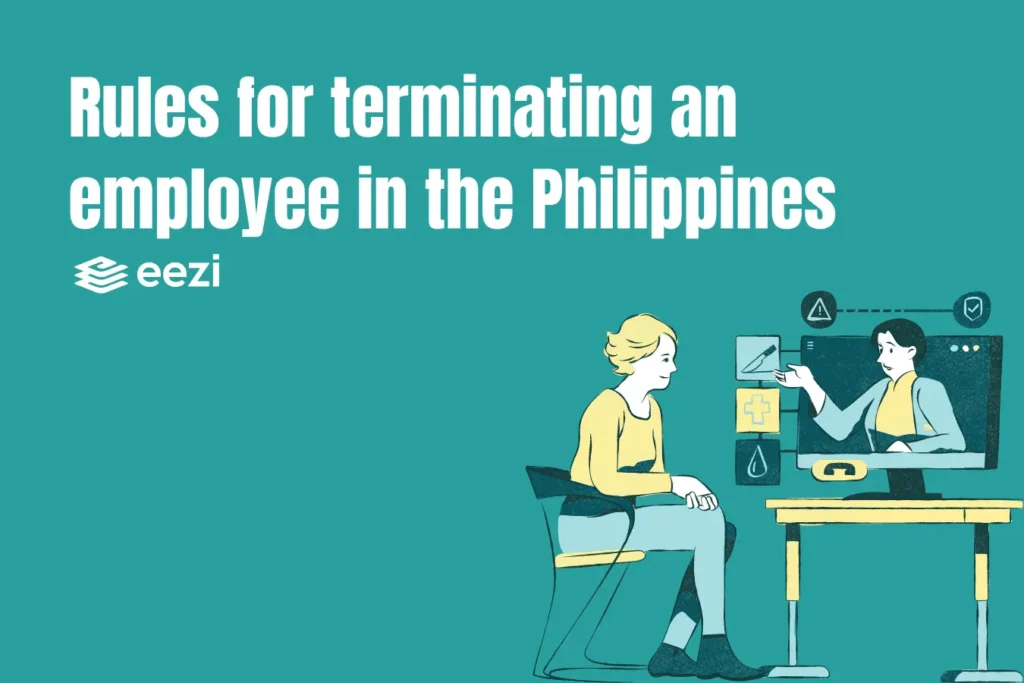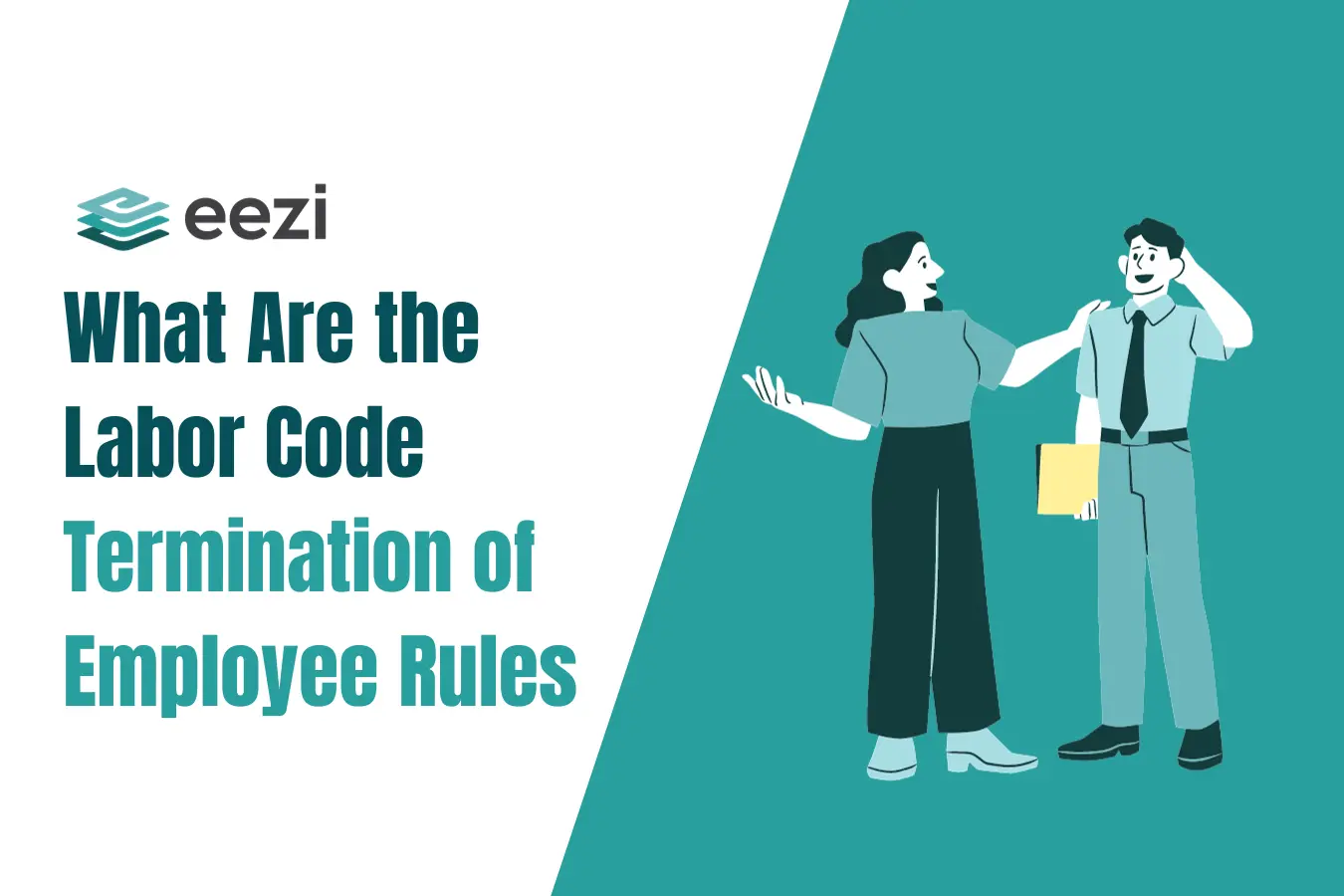What are the Labor Code rules for the termination of an employee?

The Labor Code governs employee termination in the Philippines. Moreover, it provides a clear operational framework for both employers and employees. Employers and employees should be aware of these rules to negotiate the complex world of labor relations successfully.
This way, employers can preserve a fair and ethical workplace while preventing potential legal liabilities. As such, they must abide by anti-discrimination legislation, retaliation precautions, and other applicable rules.
Terminating an employee is one of the most sensitive aspects of labor relations. That said, the Labor Code goes into extensive detail about this subject.
To help you stay guided, below is an overview of the Philippines’ employee termination laws.

DOLE Termination of Employment Rules in the Philippines
Termination is the act of ending an employee’s employment relationship with an employer.
Moreover, terminating an employee is one of the most challenging responsibilities that an HR manager can undertake. This is because non-compliance with the proper procedure could mean penalties for the firm.
As employment supports an individual and their family, it may be a life-altering event for an employee. An even worse case would be a company insisting on terminating the employee without following the proper procedures. Thankfully, there are safeguards for such situations.
When an employee is improperly terminated
Suppose an employee feels that their services were improperly terminated. In this case, they may file a complaint with the National Labor Relations Commission (NLRC), an associated agency under the DOLE.
In the Philippines, the rules in Articles 278–287 of the Labor Code of the Philippines serve as guidelines for termination. Moreover, Department Order No. 147, series of 2015, the Department of Labor and Employment outlines the most recent implementing rules and regulations regarding post-employment.
So, to further understand termination of employment, we’re moving on to the types of termination.

Types of Termination in Employment
In the Philippines, there are ways to terminate an employment relationship: either voluntarily by the employee or by the employer. Employers have the right to terminate an employee for legitimate and fair causes, such as:
- Termination by Employee
- Termination by Employer due to Authorized Causes
- Termination by Employer due to Just Causes
Authorized causes refer to valid grounds for termination that do not result from the fault or negligence of the worker. Just causes depend on behaviors related to an employee’s improper actions or negligence. Under authorized causes, the employees are entitled to separation pay or severance pay.
Employees who knowingly separate themselves from their employment for private reasons are said to have resigned voluntarily. However, this excludes situations in which workers are fired as punishment for an infraction or forced to resign using threats, coercion, intimidation, or manipulation.
Forced resignation, on the other hand, is prohibited and is regarded as a “constructive” dismissal or a dismissal in disguise.
Lastly, an employee can retire and end their employment upon reaching the prescribed retirement age in the employment contract or as stated in the collective bargaining agreement (CBA).
Related:

What are the rules for terminating an employee in the Philippines?
Employee termination is a complex process in the Philippines. As such, it can only be carried out for just or authorized cause as specified by the Labor Code.
The following are the rules for terminating an employee:
Termination by Employer
You can only fire an employee if you have just and authorized causes. An employee’s unethical actions or negligence may constitute a just cause. Consequently, accepted termination is based on legal justifications.
To terminate employment, you must keep a record of the employee’s actions and highlight the particular incidents that caused the termination. Following Article 282 of the Philippine Labor Code, an employee may be terminated in the Philippines for any of the following just causes:
- gross and habitual neglect of duty
- serious misconduct or intentional disobedience
- fraud or purposeful betrayal of trust of the employer or the duly authorized representative
- commission of an offense or crime against the employer or an immediate member of their family
- other related causes
However, Article 283 stipulates that you may also terminate an employee for authorized reasons, including operational considerations like:
- redundancy
- lowering expenses to stop losses
- installation of labor-saving devices
- closing of business or the suspension of operations
Additionally, you have the right to terminate an employee’s employment if they have a medical condition that lasts longer than six months. Moreso, if the law forbids them from working while they have it, or if working would be dangerous for them or their coworkers.
Due Process in Legal and Authorized Termination
Due process in the job termination context is the right of an employee to be informed of the grounds for their termination. In the case of just causes, this is their right to be given the chance to defend themselves.
Both reasonable and allowed causes are subject to distinct due processes. While approved cause requires a 30-day notice, just cause is subject to a two-notice rule.
According to Labor Code Article 279, an employee has the right to reinstatement and full back pay if due process was not given to them before their employment was terminated or if the termination was ruled unlawful.
In cases where the dismissal was unfair, separation pay may be given if reinstatement is no longer an option.
Note that at-will employment, where an employer can terminate an employee without warning is not allowed under Philippine labor laws.
Requirements for Just Cause Termination
Just cause terminations are subject to the two-notice rule, which includes the following:
- A written notice, sometimes known as a “notice to explain,” outlining the reasons for termination and providing the employee with sufficient time to present their defense;
- An opportunity for the employee to address the charges, offer evidence, or refute the evidence used against them at a hearing or meeting. Moreover, the employer must also give the employee ample opportunity to voice out their side.
- A notice of determination detailing the reasons for termination and any associated consequences (if any), following careful assessment of all available information.
Requirements for Termination Under Authorized Causes
Terminations for authorized causes include the following:
- Giving the worker a written notice of termination outlining the reasons for the termination at least thirty days before the intended date of termination and
- A copy of the written notice needs to be delivered to the DOLE regional office where the employer is situated.
Read more: What are the employment types in the Philippines
What Does Termination of Employment under Article 297 of the Labor Code Entail?
Depending on the circumstances, an employer may terminate a worker for an authorized or just cause. The employer must follow due process while doing this.
According to what was previously mentioned, an employee who gets terminated for cause has done something wrong.
These just causes are described in Article 297 of the Philippine Labor Code, including substantial misbehavior, gross and habitual neglect, willful breach, etc.
Following Article 297 of the Labor Code, an employer has the right to terminate a worker’s employment if the employee willfully violates the confidence that his employer or duly authorized representatives have placed in him.
Take Away
Terminating employment is intricate and involves several legal and employee rights concerns. To ensure a fair and legal procedure for all parties involved, employers must also be mindful of the legal grounds for termination and follow necessary procedures.
This includes giving notice, letting the worker appeal to the decision, and, if appropriate, giving the separation pay.
Employers should think about assisting the worker during the transition, mainly where there are medical grounds for the dismissal.
Following the correct procedures and being aware of the nuances of employment termination can help guarantee a fair and legal process for all parties.
Related: Small Business HR Tips
Manage Your Employees’ Records and Performances Easily
One of the leading causes for needing to terminate an employee is typically poor work performance. Employers must follow legal guidelines when terminating a worker due to poor performance.
As such, it is beneficial to have dependable HRIS software that controls HR activities effortlessly if you want to make sure you have not missed any records of your employees’ performance.
With eezi, you won’t have to worry if you need your employee’s records! It is a reliable and secure resource for your HR department.



